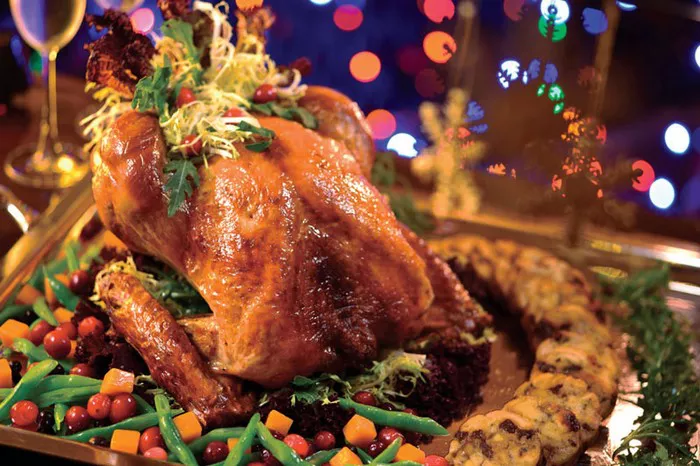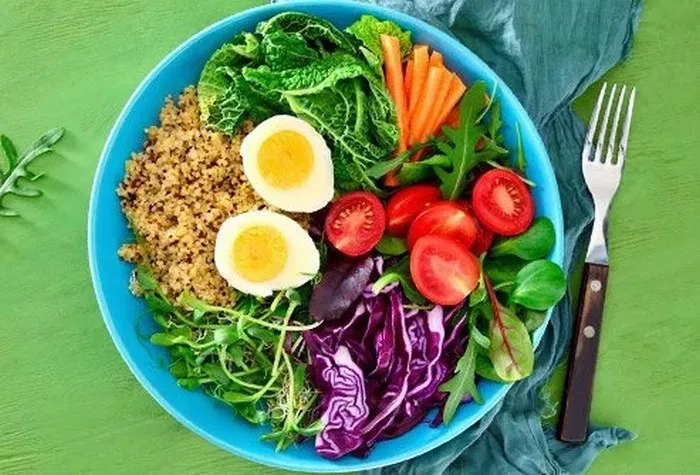Turkey, with its succulent meat and rich flavor, is a centerpiece of festive meals and family gatherings. However, achieving the perfect balance of juiciness and flavor requires more than just placing it in the oven and waiting. In this comprehensive guide, we will explore the art of cooking turkey, providing you with step-by-step instructions, pro tips, and creative ideas to ensure your turkey becomes the most delicious food on the table.
Understanding the Basics of Turkey Cookery
Before we dive into the specifics of cooking a delicious turkey, it’s essential to understand the basics that form the foundation of a successful preparation.
Selecting the Right Turkey:
Begin with a high-quality turkey. Whether you choose fresh or frozen, organic or conventional, the key is to ensure the turkey is plump, well-shaped, and free from any off-putting odors.
Thawing Safely:
If working with a frozen turkey, allow ample time for proper thawing. Thawing in the refrigerator is the safest method, allowing for a slow and even thaw without the risk of bacterial growth.
Brining for Flavor:
Consider brining your turkey to enhance its flavor and juiciness. A simple brine of water, salt, sugar, and aromatics can work wonders in infusing the meat with extra moisture and taste.
Seasoning Techniques:
Whether using a dry rub, herb butter, or a classic salt and pepper seasoning, be generous with your flavorings. Turkey can handle bold seasonings, so don’t be afraid to experiment.
Proper Cooking Temperatures:
Invest in a reliable meat thermometer to ensure your turkey reaches the recommended internal temperature. For the best results, the thickest part of the thigh should register at least 165°F (74°C).
Step-by-Step Guide to Cooking the Most Delicious Turkey
Step 1: Preparing the Turkey
1.1. Thoroughly Clean and Pat Dry:
Start by removing the turkey from its packaging and cleaning it thoroughly, both inside and out. Pat the turkey dry with paper towels to ensure crispy skin during cooking.
1.2. Remove Giblets and Neck:
Check the turkey cavity for giblets and the neck. Remove these before proceeding. The giblets and neck can be used to make a flavorful broth or gravy.
1.3. Truss the Turkey (Optional):
Trussing helps the turkey cook more evenly and maintains its shape. While it’s optional, trussing can enhance the presentation of the finished bird.
Step 2: Seasoning the Turkey
2.1. Dry Rub:
Apply a generous amount of dry rub to the turkey, covering all surfaces. A mixture of salt, pepper, paprika, garlic powder, and dried herbs works well. Ensure you season both the exterior and the interior of the turkey.
2.2. Herb Butter:
Create a flavorful herb butter by combining softened butter with minced garlic, chopped fresh herbs (such as rosemary, thyme, and sage), salt, and pepper. Rub this mixture under the turkey’s skin and over the surface.
2.3. Aromatics Inside the Cavity:
Enhance the turkey’s flavor by stuffing the cavity with aromatic ingredients like quartered onions, celery, carrots, and fresh herbs. This not only adds flavor but also contributes to the overall aroma.
Step 3: Choosing the Cooking Method
3.1. Roasting:
Roasting is the traditional method for cooking a turkey. Preheat the oven to 325°F (163°C) and roast the turkey in a roasting pan, allowing it to cook until the internal temperature reaches 165°F (74°C).
3.2. Grilling:
Grilling adds a smoky flavor to the turkey. Set up your grill for indirect heat and cook the turkey with a drip pan underneath. Use wood chips for additional smokiness.
3.3. Frying:
Deep-frying yields a crispy skin and juicy interior. Ensure the turkey is completely thawed and carefully follow safety guidelines when deep-frying. Use a reliable outdoor turkey fryer.
Step 4: Monitoring the Cooking Process
4.1. Using a Meat Thermometer:
Regularly check the turkey’s internal temperature with a meat thermometer. Place the thermometer in the thickest part of the thigh, avoiding contact with the bone.
4.2. Basting (Optional):
While basting is a traditional method, it’s debated among chefs. Basting adds moisture, but it can also extend cooking time. If you choose to baste, do so sparingly to avoid losing oven heat.
4.3. Tenting with Foil:
If you notice the skin is browning too quickly, tent the turkey with aluminum foil. This helps prevent over-browning while allowing the interior to continue cooking.
Step 5: Allowing for Resting Time
5.1. Resting Period:
Once the turkey reaches the desired temperature, remove it from the oven or grill and let it rest for at least 20-30 minutes before carving. This allows the juices to redistribute, resulting in a juicier bird.
Creative Ideas to Elevate Your Turkey Game
While a perfectly roasted or grilled turkey is a showstopper on its own, consider these creative ideas to elevate your turkey game:
Citrus and Herb Infusion:
Slide slices of citrus fruits (lemons, oranges) and fresh herbs under the turkey skin before cooking. This infuses the meat with a burst of citrusy and herbal flavors.
Beer Can Turkey:
Grill the turkey vertically using the beer can method. Place an opened can of beer inside the turkey, which not only adds moisture but also imparts a unique flavor.
Bacon-Wrapped Turkey:
Wrap the turkey in bacon strips before cooking. The bacon adds a layer of richness and smokiness while keeping the turkey moist.
Fruit Glaze:
Brush the turkey with a fruit glaze during the last hour of cooking. Apricot or cranberry glazes add a sweet and tangy element to the turkey’s exterior.
Spatchcocking:
Consider spatchcocking (removing the backbone and flattening the turkey) for a quicker and more even cooking process. This method also provides more surface area for seasoning.
Conclusion:
In conclusion, cooking a delicious turkey is an art that requires attention to detail, patience, and a touch of creativity. By following this comprehensive guide, you can navigate the intricacies of turkey cookery and present a centerpiece that not only looks impressive but also tantalizes the taste buds of your guests. Whether it’s a Thanksgiving feast, a holiday celebration, or a special family gathering, the effort you invest in preparing a delicious turkey will undoubtedly be rewarded with smiles and satisfaction. Embrace the joy of cooking and savor the fruits of your labor as you carve into a perfectly cooked, most delicious turkey.






















